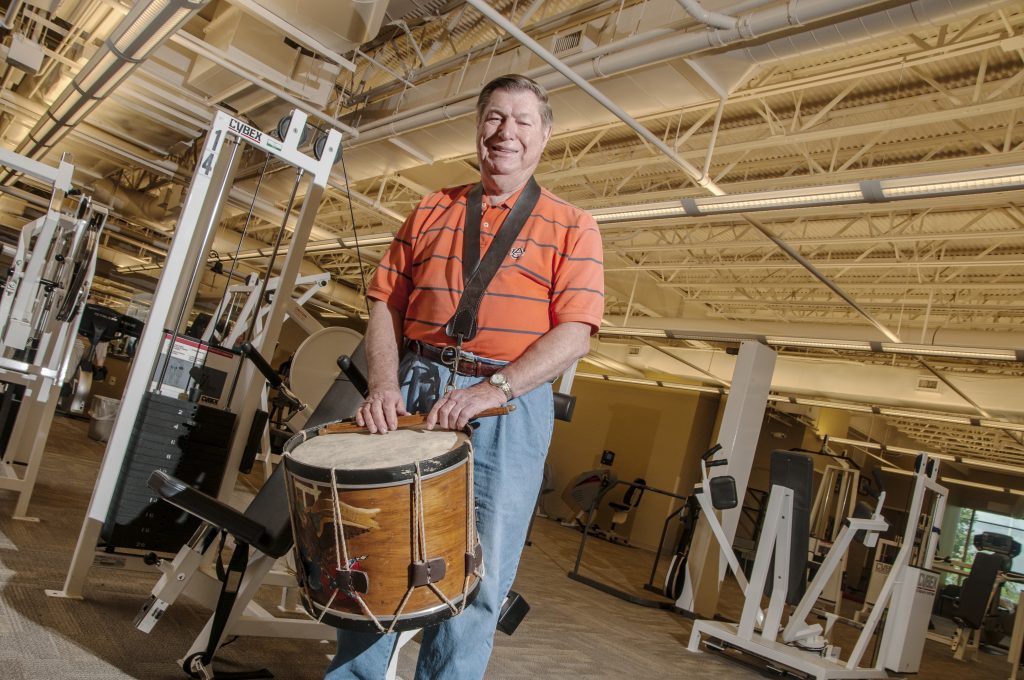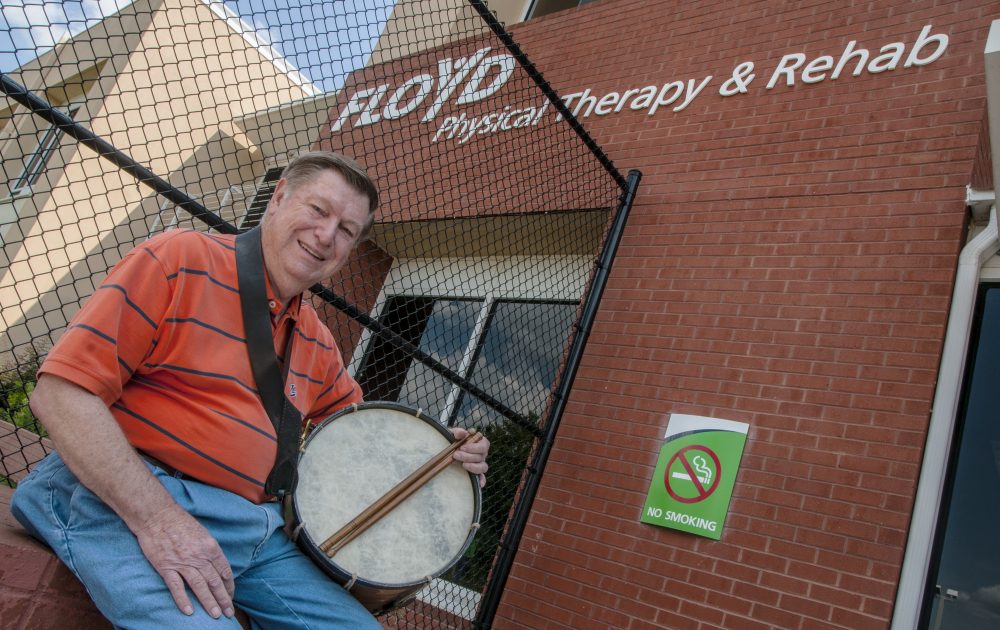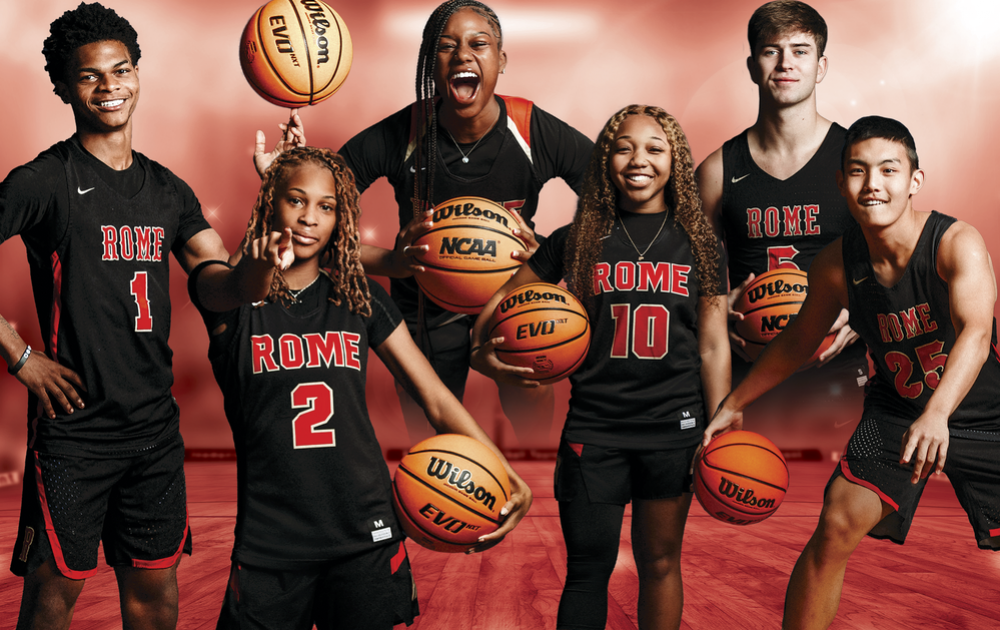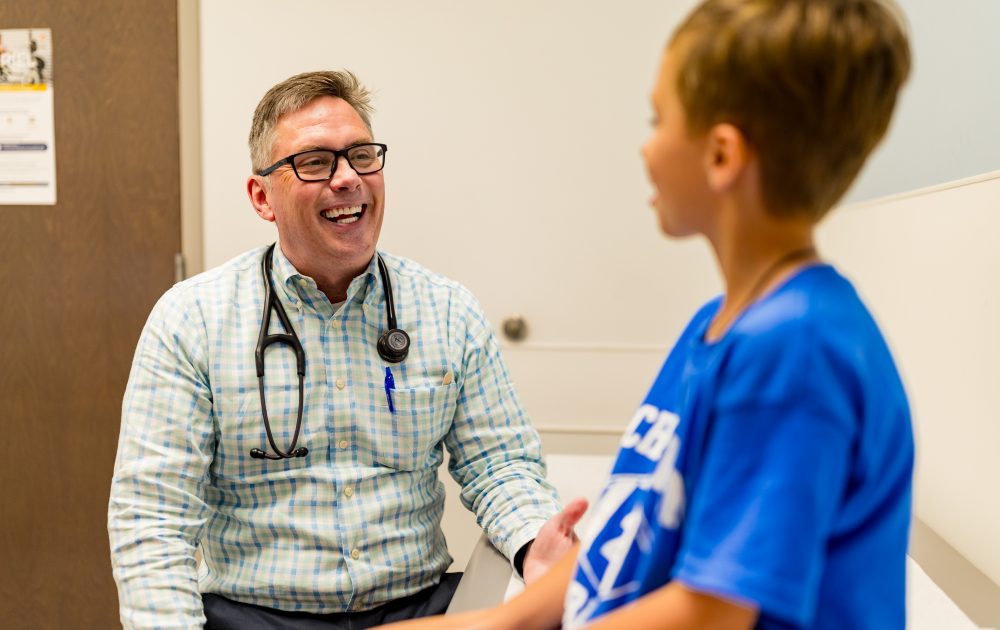
photos derek bell
After parking three blocks from Jordan-Hare Stadium, carefully hoisting himself from his vehicle, and taking in the busy game-day fervor, Jim Flournoy steeled himself with conviction and began the trek that once seemed so easy he had taken it for granted.
His wife was out of town and Flournoy had decided to go to the Auburn game, which at face value doesn’t seem monumental. But the 73-year-old stroke survivor had only within the last year regained his ability to walk and speak.
Each step toward the stadium was nothing short of a tangible miracle.
“I walked very carefully, without a walker and without a walking stick,” Flournoy says. “I walked in after I had purchased a ticket from a street vendor. I looked up and I thought, ‘Oh my gosh!’ I didn’t realize how tall this place was.”
If you had told Flournoy in the winter of 2014 that one day he would be able to go to a game by himself, he would have been skeptically hopeful – for, at that time, he was bed bound and learning to speak again.
The stroke happened in October of 2014. Flournoy was in a store in downtown Rome when suddenly he felting a sinking sensation, as if his body were being swallowed by quicksand. Someone rushed up and shoved a chair beneath him before he hit the floor. An ambulance was called. Flournoy remembers people asking him questions, bystanders and medical personnel, but he couldn’t speak. He couldn’t tell them what was wrong or what he was feeling. It was beyond frustrating.
“I was in a hospital bed for five weeks,” he says. “Then, I was in a wheelchair. Then after that, I was taken to various therapists. I went to speech therapy and learned how to speak again. They told me not to get into a very big hurry or I would stutter. I tried to do as they’d say.”
With the help of an aid, Flournoy would get into a wheelchair and roll down the exercise area, where he engaged in several physical therapy sessions a day.
“I did all sorts of exercises – walking in place, holding onto horizontal bars, stepping up and stepping down on a set of three steps, rolling over left and right,” he says. “There were various exercises that kept me thinking and moving to their commands.”
Eventually, Flournoy was able to leave the wheelchair behind for a walker and, later, a cane. After about six weeks of physical therapy, he could walk to his car using the cane, a major accomplishment. But his work was far from finished; officials at another local hospital told him he needed to continue his physical ther-apy, and they signed him up at Floyd Medical Center’s Outpatient Rehab facility.
At Floyd, one of the first questions the physical therapists asked him was, “What is your goal?” He replied that he wanted to march in the Auburn Alumni Band again.
A 1962 graduate of Auburn University, where he was a snare drummer in both the marching and concert bands, Flournoy had marched in the Alumni Band for 29 years at Homecoming games until the stroke.
Alumni of all ages return to the stadium each year and, during halftime, march from the field house to the stadium, once around the field, and then enter the stadium seats to sit and play together, all while the drumline rattles off eight cadences in between the fight song and other distinctive Auburn tunes.
“You have to be very dexterous to do that. I enjoy it a lot,” Flournoy says. “But I was unable to walk in the soft grass and down the street because I was out of balance.”
Suzanne Dunn, a physical therapist at Floyd Medical Center who was part of the team that worked directly with Flournoy, said his specific goal inspired her and other therapists to help him make his dream come true.
“We always ask (our patients), ‘What are your goals for rehab?’” says Dunn. “Some may say, ‘I just want to walk independently again,’ or some may say something specific like Jim, ‘I want to be able to play in the band again.’”
Flournoy’s therapy exercises focused on gait training, balance retraining, strengthening and functional-mobility, so that he could walk independently and safely.

“He needed to be able to carry his drum, walk and play it at the same time,” explains Dunn. “He had to have a lot of balance, a lot of motor coordination in order to do that.”
When Flournoy felt more comfortable on his feet and could balance even better, Dunn says she and the other Floyd physical therapists invited him to play the drum for them.
“He stood and played for all the staff and the patients that were in there,” Dunn recalls. “It was really humbling to us; it was our blessing to be able to see him doing something that he enjoyed doing and to give him the environment that enabled him to do what he loved again.”
Dunn said Flournoy’s dedication to relearn-ing to walk and speak, not rushing the process, but allowing himself to be retrained to do things safely, is what helped him regain his abilities.
“When we can see them accomplish those kinds of goals … it makes us realize why we do what we do for a living,” she says. “He’s a role model to a lot of the other patients that we have. He will go around the gym and talk to current and former patients and tell them his story, and he’ll encourage them. He is determined.”
While Flournoy completed all the structured physical therapy sessions at Floyd more than a year ago, he still returns to the rehab center several times a week. He does exercises on the machines there in addition to what he does at home.
Each day, he goes up and down the steps to the basement in his home, using the bannisters and being very careful, he says. He walks to the mailbox and back, visits his neighbors, and walks around his home. He and his wife also walk in Downtown Rome to continue to work on his balance.
He has had to make a few changes, but at 73, he says won’t be taking any more chances. “I do not mow the grass anymore, even though my yard is relatively level,” he says. “My son does that.”
Flournoy conceded that going to the Auburn game by himself last fall was not a wise choice. But sometimes, not even a stroke can keep a hardcore Tiger away.
“I wanted to go to the game because it’s in me,” he says emphatically. “I have that enthusiasm.”
As for playing in the Alumni Band again, Flournoy is hopeful.
“I won’t be marching; I will be walking into the stadium and sitting with the band, but I won’t march in and play all that distance,” he says. “I’m afraid I would lose my balance.”
When he looks back to where he was in the fall of 2014, unable to walk or speak, to now, walking carefully, speaking slowly yet deliberately, Flournoy is overcome.
“It is almost to the point to where I can’t speak because of the emotions,” he says. “I get emotional about it because it’s so wonderful. It’s as if a miracle has happened. These folks have brought me from being in a situation where I could not even talk to my family to where I can speak.
They told me, ‘Don’t give up. Keep trying.’ And that’s what I’ve done.”




